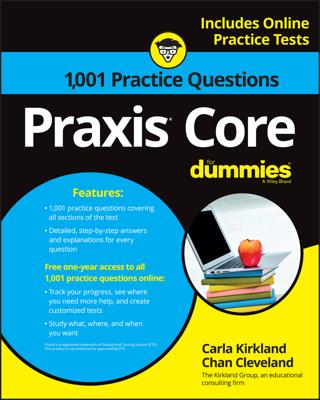The Praxis Core exam is divided into three tests: reading, writing, and mathematics. Take careful note of the difference between our use of “exam” and “test.” Each test is scored separately, and every state that requires passing scores for the exam requires that exam-takers pass each of the three tests that compose the exam.
Your score on a given test is based on a raw score and adjusted to a scale that ranges from 100 to 200 points.
Your raw score is the number of questions you answer correctly. You don’t lose any points for answering a question incorrectly. If you were to answer every single question incorrectly, your raw score would be 0, which is exactly what it would be if you didn’t answer any questions at all. That’s why you have nothing to lose by guessing if you don’t know the answer to a question.
Your score for each test involves taking your raw score, or the number of questions you answer correctly, and comparing it to the number of questions on the test. This comparison determines your final score, the number that exists in the range from 100 to 200.
Your final score determines whether you pass the test. You pass the test in most states by answering at least 60 percent of the questions correctly. This gives you a benchmark to measure yourself against as you go through the practice tests.
When you receive your test results, you’ll see a raw score for each test, and you’ll also get a raw score for each content category into which the test is divided. Your total raw score is converted to a scaled score that adapts for the level of rigor of that particular testing edition.
If you fail the Praxis the first time you take it (or if you’ve already failed it), you can look at your scores for each content category to see where you did well and where you struggled. Use those scores to direct your studies in anticipation of taking the test again.
Each state that requires passing the exam has its own minimum scores for each of the tests that make up the exam. What constitutes a passing score in one state may not be a passing score in another state. Contact your state local department of education for the actual cut scores.

